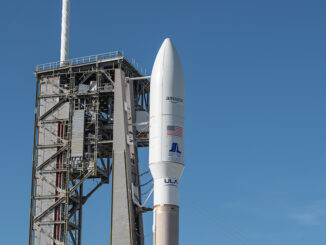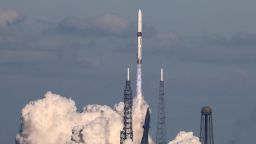United Launch Alliance Successfully Launches Vulcan Rocket for U.S. Space Force

United Launch Alliance (ULA) successfully launched its first fully operational Vulcan rocket on August 12, 2025, marking a significant milestone for both the company and the U.S. Space Force. The launch, designated as the USSF-106 mission, took place at Space Launch Complex 41 at Cape Canaveral Space Force Station. This mission represents the inaugural national security operation utilizing the Vulcan rocket, which is set to replace ULA’s Atlas 5 and retired Delta rockets.
The Vulcan rocket, towering at 198 feet, lifted off at 20:56 EDT. It was equipped with four solid-fuel strap-on boosters that provided additional thrust during takeoff. The rocket’s two methane-fueled BE-4 engines generated nearly 3 million pounds of thrust, propelling it into the sky with a visible jet of exhaust. The launch was not only a technical achievement but also a visually stunning event, as the rocket arced over the Atlantic Ocean.
Key Mission Objectives and Payloads
Approximately 90 seconds after liftoff, the four strap-on boosters were jettisoned, followed by the burnout and separation of the Vulcan’s first stage three and a half minutes into the flight. The Centaur second stage then ignited its two hydrogen-fueled Aerojet Rocketdyne RL10C engines. Following U.S. military policy for classified missions, ULA ceased its launch commentary at this point, with details of the flight remaining undisclosed.
It is believed that two critical satellites were aboard the Vulcan, including one classified military spacecraft and an experimental satellite named Navigation Technology Satellite 3 (NTS-3). This experimental satellite is designed to test advanced atomic clocks and navigation technologies, which aim to enhance the accuracy of Global Positioning System (GPS) data for military and commercial applications. NTS-3 will operate from geosynchronous orbit, approximately 22,300 miles above the equator, allowing it to maintain a stationary position relative to the Earth.
Joanna Hinks, a senior aerospace engineer at the Air Force Research Laboratory, emphasized the importance of GPS in daily life. “With NTS-3, we are going to be experimenting with a number of different technologies that look at how we can continue to evolve and augment GPS to make sure that it remains the gold standard that our warfighters need,” Hinks stated.
Significance of the Vulcan Rocket
The successful launch of the Vulcan rocket signifies a turning point for United Launch Alliance. This mission marks ULA’s 101st national security operation and the third launch of the Vulcan model following two test flights in the previous year. The U.S. Space Force has now certified the Vulcan for carrying valuable national security payloads, including spy satellites and other military spacecraft.
Gary Wentz, ULA’s Vice President of Government and Commercial Programs, noted the mission’s importance: “This mission is headed directly to geosynchronous orbit and will be one of our longest missions to date. This is the sole purpose of this vehicle; it was purposely designed to support these missions doing direct inject to geo for the Space Force.”
The Vulcan rocket is designed to address security concerns regarding reliance on foreign technology, particularly the Russian-built RD-180 engines used in the Atlas 5. With 13 Atlas 5 rockets remaining in ULA’s inventory, all designated for civilian launches, the company is transitioning to an all-Vulcan fleet.
As ULA aims to enhance its launch capabilities, it is competing against SpaceX, which has dominated the global launch market with its Falcon 9 and Falcon Heavy rockets. In 2023 alone, SpaceX has completed 97 Falcon 9 launches. ULA President and CEO Tory Bruno expressed confidence in the Vulcan’s capabilities. He stated that its first stage, powered by high-performance BE-4 engines from Blue Origin, allows for efficient launches of heavy military payloads.
Bruno explained, “One core is cheaper and more efficient than three expendable cores. It’s literally that simple.” The Vulcan’s design enables direct injections to high orbits without the need for satellites to expend their own thrusters, thereby conserving propellant.
Looking ahead, ULA is expanding its ground infrastructure and anticipates launching nine missions in 2025, with a goal of increasing to two launches per month by the end of the year. The company projects a total of 20 to 25 launches in 2026, further solidifying its position in the aerospace industry.






